- Step 1: The Groundwork
- Step 2: The Three Sections
- Step 3: Practice Makes Improvement
- The Secret Ingredient
- Understanding Basics Of Number Series
- Types Of Number Series Reasoning Questions
- Addition & Multiplication In Number Series
- Square & Cube-Based Number Series Patterns
- Missing Terms & Arranging Sequences
- Tricks & Tips For Solving Number Series
- Selected Number Series Questions With Solutions
- Frequently Asked Questions (FAQs)
- Must Know Terminologies in Blood Relation Questions
- Basic Approaches to Solve Blood Relation Questions
- Types Of Blood Relation Questions
- Tips For Solving Blood Relation Questions
- Multiple Choice Questions (MCQs) with Detailed Explanation
- Conclusion
- Frequently Asked Questions (FAQs)
- Letter Series In Logical Reasoning
- Types Of Letter Series Patterns
- Tips For Solving Letter Series Reasoning
- Best Practice Question Samples With Answers
- Conclusion
- Frequently Asked Questions (FAQs)
- Basics of Problems On Age-Related Questions
- Formula to Solve Problems on Ages-Related Questions
- Types of Age-Related Questions & Examples
- Tips & Tricks for Solving Ages Problems
- Best MCQs on Problems on ages with solved answers
- Conclusion
- Frequently Asked Questions (FAQs)
- Definition of Calendar
- Understanding Days of the Week
- What is a Leap Year?
- Concept of Odd Days in a Century
- Tips For Solving Calendar Reasoning Questions
- Best Calendar Reasoning Questions with Answers (MCQs)
- Frequently Asked Questions (FAQs)
- Basic Concepts of Clock
- Structure of a Clock
- Angle Equilavalence in Clock
- Tips For Solving Clock Questions
- Selected Clock Questions & Answers (MCQs)
- Conclusion
- Frequently Asked Questions (FAQs)
- Understanding The Concept Of Direction Sense
- Tips For Effective Problem-Solving In Direction Sense
- Practical Test Practice Questions And Answers
- Conclusion
- Frequently Asked Questions (FAQs)
- Importance Of Dice Reasoning
- Dice Numbers In Dice Reasoning
- Classification Of Dice
- Constructed Vs Deconstructed Dice
- Tricks & Tips For Solving Dice Problems
- Practice MCQs With Detailed Answers
- Conclusion
- Frequently Asked Questions (FAQs)
- Alphanumeric Series Defined
- Alphanumeric Series In Reasoning Tests
- Tips & Strategies For Solving Alphanumeric Series
- Practice Sample Questions With Detailed Answers
- Conclusion
- Frequently Asked Questions (FAQs)
- Concept Of Mirror Image Reasoning Explained
- Important Terms In Mirror Image Reasoning
- Types Of Mirror Images
- Identifying Correct Mirror Image
- Finding Clock's Mirror Image
- Tips To Solve Mirror Images
- Selected Practice Questions With Answers
- Conclusion
- Frequently Asked Questions (FAQs)
- Concept & Overview Of Input-Output
- Input-Output In Competitive Exams
- Types Of Input-Output Problems
- Strategies, Tips & Tricks For Solving Reasoning Questions
- Selected Practice Questions With Answers
- Conclusion
- Frequently Asked Questions (FAQs)
- Importance Of Finding The Odd One Out
- Tricks And Tips
- How to Find The Odd One Out?
- Solved MCQs with Detailed Explanation
- Conclusion
- Frequently Asked Questions (FAQs)
- Understanding Key Concepts
- Exploring Different Ranking Types
- Formula And Application Of Order And Ranking
- Tips For Solving Order & Ranking
- Selected Practice Questions And Answers
- Conclusion
- Frequently Asked Questions (FAQs)
- Importance Of Pipes & Cistern Aptitude
- Key Terminologies used in Pipes and Cisterns
- Pipes and Cisterns Formula with Examples
- Pipes and Cisterns Shortcut Tricks
- Tips For Solving Pipes & Cistern Problems
- Selected Questions & Answers For Practice (MCQs)
- Conclusion
- Frequently Asked Questions (FAQs)
- Key Concept in Boats and Streams
- Formulas Of Boats & Streams
- Distance & Time Formula
- Tips For Solving Boats & Streams Questions
- Selected Practice Questions With Answers (MCQs)
- Conclusion
- Frequently Asked Questions (FAQs)
- Concept of Mixture and Alligation
- Types Of Alligation Questions
- Formula for Solving Mixture & Alligation
- Tips For Solving Mixture And Alligation
- Selected Questions With Answers For Practice
- Conclusion
- Frequently Asked Questions (FAQs)
- Concepts and Definitions Related to Time and Work
- Important Time And Work Formulas
- Tricks and Tips to Solve Time & Work Questions
- Time And Work MCQs with Detailed Solution
- Conclusion
- Frequently Asked Questions (FAQs)
- What is Harmonic Progression(HP)?
- Formula to find the nth Term in Harmonic Progression
- Formula to find the Sum of the nth Term in HP
- What is Harmonic Mean?
- Harmonic Progression Solved Best MCQs
- Conclusion
- Frequently Asked Questions (FAQs)
- What is Mensuration in Maths?
- What are 2D figures in Mensuration?
- What are 3D figures in Mensuartion?
- Basic Terminologies In Mensuration
- Basic 2D Formulas in Mensuration
- Basic 3D Formulas in Mensuration
- 2D vs 3D in Mensuration
- Solved Questions With Solutions (MCQs)
- Conclusion
- Frequently Asked Questions (FAQs)
- Relationship Between Time, Speed And Distance
- Conversion Units Time, Speed And Distance
- Average & Relative Speed: Two Trains Moving in the same or opposite direction
- Solved MCQs on Time, Speed And Distance
- Conclusion
- Frequently Asked Questions (FAQs)
- What is Simplification in Maths?
- BODMAS Rule in Simplification Explained
- Simplification & Approximation Relation
- Key Terms in Simplification
- Examples Of Simplification Techniques
- Simplification Questions With Solved Answers (MCQs)
- Conclusion
- Frequently Asked Questions (FAQs)
- Height And Distance Important Terms
- Right Angled Triangle In Trigonometry
- Trigonometric Ratios
- Solved Examples For Better Understanding
- Height And Distance Applications In Trigonometry
- Height And Distance Practice Questions & Answers
- Conclusion
- Frequently Asked Questions (FAQs)
- Defining Interest Types
- Simple Interest Vs. Compound Interest
- Selected Solved Questions & Answers
- Conclusion
- Frequently Asked Questions (FAQs)
- Basic Concepts Of Profit And Loss
- Determining Selling Price
- Calculating Discounts
- Formulas For Calculating Profit And Loss
- Examples Of Profit And Loss
- Profit & Loss Questions With Detailed Solution
- Conclusion
- Frequently Asked Questions (FAQs)
- Defining Angle Of Elevation
- Key Terms Used In Angle Of Elevation
- Angle of Elevation Formula with Example
- Angle of Elevation vs. Angle of Depression
- Angle of Elevation MCQs with Answers
- Conclusion
- Frequently Asked Questions (FAQs)
- Defining HCF And LCM
- Calculation Methods Of HCF And LCM
- HCF By Prime Factorization Method
- LCM By Prime Factorization Method
- Difference Between HCF And LCM
- HCF & LCM Practice Questions With Answers
- Conclusion
- Frequently Asked Questions (FAQs)
- What is fraction and decimal?
- Understanding Decimal Fraction
- Place Value in Decimal Fraction
- Mathematical Operations with Decimal Fraction
- Practice with Solved Examples
- Summary
- Frequently Asked Questions
- All About Decimals
- All About Fractions
- How to Convert a Decimal into Fraction
- Simple vs Recurring Decimals
- Converting Recurring Decimals to Fractions
- Conversion Charts
- Practice Questions (With Solutions)
- Closing Thoughts
- Frequently Asked Questions
- What is Arithmetic Mean?
- Arithmetic Mean Formula- Ungroup Data & Group Data
- Merits of Arithmetic Mean
- Demerits of Arithmetic Mean
- Alternatives to Arithmetic Mean
- What is the Weighted Arithmetic Mean?
- Arithmetic vs. Geometric Mean
- Arithmetic Mean Application in Statistical Analysis
- Arithmetic Mean Practice Questions with Explanation
- Frequently Asked Questions
- What is Geometric Progression?
- Key Properties of Geometric Progression
- General Form Of Geometric Progression
- General Term or the Nth Term of Geometric Progression
- The sum of nth Terms of GP
- Types Of Geometric Progression
- Solved Questions and Answers of GP
- Conclusion
- Frequently Asked Questions (FAQs)
- Average in Maths
- Average Formula in Maths
- Differentiating Types of Average
- How to Calculate Average of Negative Numbers?
- Practical Applications of Averages
- Average Questions For Practice
- Frequently Asked Questions
- What is Simple Interest in Maths?
- Simple Interest Formula Explained
- Simple Interest Formula for Years, Months & Days
- Simple Interest Examples & Practice Questions
- Conclusion
- Frequently Asked Questions (FAQs)
- Defining Mathematical Ratios
- Understanding Proportions Fundamentals
- Differentiating Ratios from Proportions
- Ratio and Proportion Formulas
- Properties of Ratio and Proportion
- How to Solve Ratio and Proportion Problems
- Ratio and Proportion Problems (With Solutions)
- Summary
- Frequently Asked Questions
- What is Number in Maths?
- Types of Numbers With Example
- Real vs Complex Numbers Explored
- Basic Operations on Numbers
- Practice Questions (With Solutions)
- Frequently Asked Questions
- What is Arithmetic Progression (AP) in Maths?
- Important Terminologies in Arithmetic Progression
- Basic Terms in Arithmetic Progression
- General Form Of Arithmetic Progression Series
- Types Of Arithmetic Progression
- Solved Questions With Explanation (MCQs)
- Conclusion
- Frequently Asked Questions (FAQs)
- Understanding Basic Concept
- Importance Of Train Problems In Aptitude
- Tips To Solve Train Problems
- Selected Practice Questions & Answers
- Conclusion
- Frequently Asked Questions (FAQs)
- Definition Of Mode
- Calculating Mode For Ungrouped Data
- Calculating Mode For Grouped Data
- Bimodal, Trimodal & Multimodal Distributions
- Comparing Mean, Median & Mode
- Selected Practice Questions With Answers
- Conclusion
- Frequently Asked Questions (FAQs)
- Important Concept In Races And Games
- Calculating Time, Speed & Distance
- Importance Of Races And Games Problems
- Sample Practice Questions With Answers
- Conclusion
- Frequently Asked Questions (FAQs)
- Types Of Partnership
- Formula For Partnership Questions
- Tips To Solve Partnership Aptitude Questions
- Selected Partnership Questions (Practice MCQs)
- Conclusion
- Frequently Asked Questions (FAQs)
What Is Number In Maths: History, Types, Operations & More

Ever wonder about the significance of numbers in mathematics? What is number in maths, and how does it shape our understanding of the world around us?
From counting objects to solving complex equations, numbers are pivotal in various mathematical concepts and real-world applications. Dive into this blog post to understand these fundamental building blocks of mathematics.
What is Number in Maths?
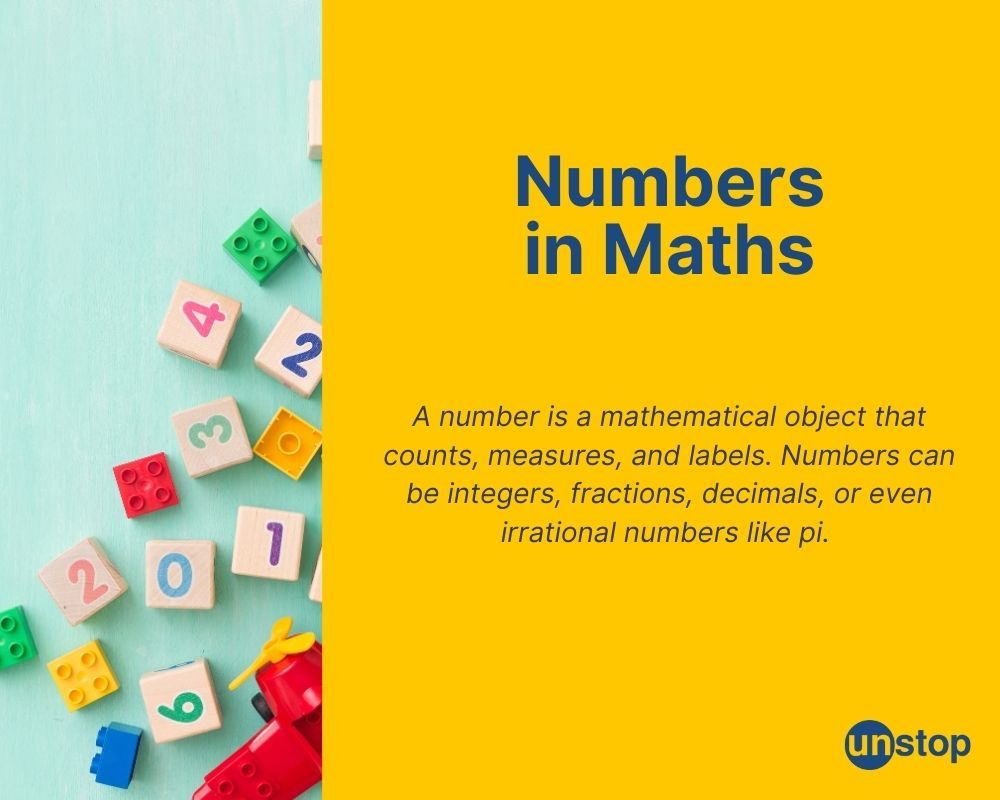
Definition of Number in Maths
A number is a mathematical object that counts, measures, and labels. Numbers can be integers, fractions, decimals, or even irrational numbers like pi. They are essential in performing calculations, solving equations, and representing quantities in various mathematical contexts. Examples of numbers include 5, -2.3, 1000, 6.8, etc.
To answer the question, what is number in maths? - Numbers are the building blocks of mathematics, forming the foundation for all mathematical operations and concepts.
In computer science, numbers are represented digitally using binary code. Understanding how computers interpret numerical data is essential for programming and data processing tasks.
- Binary code consists of 0s and 1s to represent information electronically.
- Hexadecimal system is another numerical representation used in computing for encoding data efficiently.
History and Evolution of Numerical Systems
Ancient civilizations, such as the Babylonians, Egyptians, and Greeks, developed number systems to count and measure. The Babylonians used a base-60 system, while the Egyptians employed hieroglyphs for numbers.
Over time, various cultures devised unique ways to represent numbers. The Romans used letters like I, V, X, L, C, D, and M for values. In contrast, the Mayans utilized a sophisticated system with dots and bars.
The Hindu-Arabic numeral system revolutionized mathematics in the 9th century. Introduced by Indian mathematicians like Brahmagupta, it featured numbers 0-9 and a place-value system. This innovation spread to Europe through translations of Arabic texts.
Types of Numbers With Example
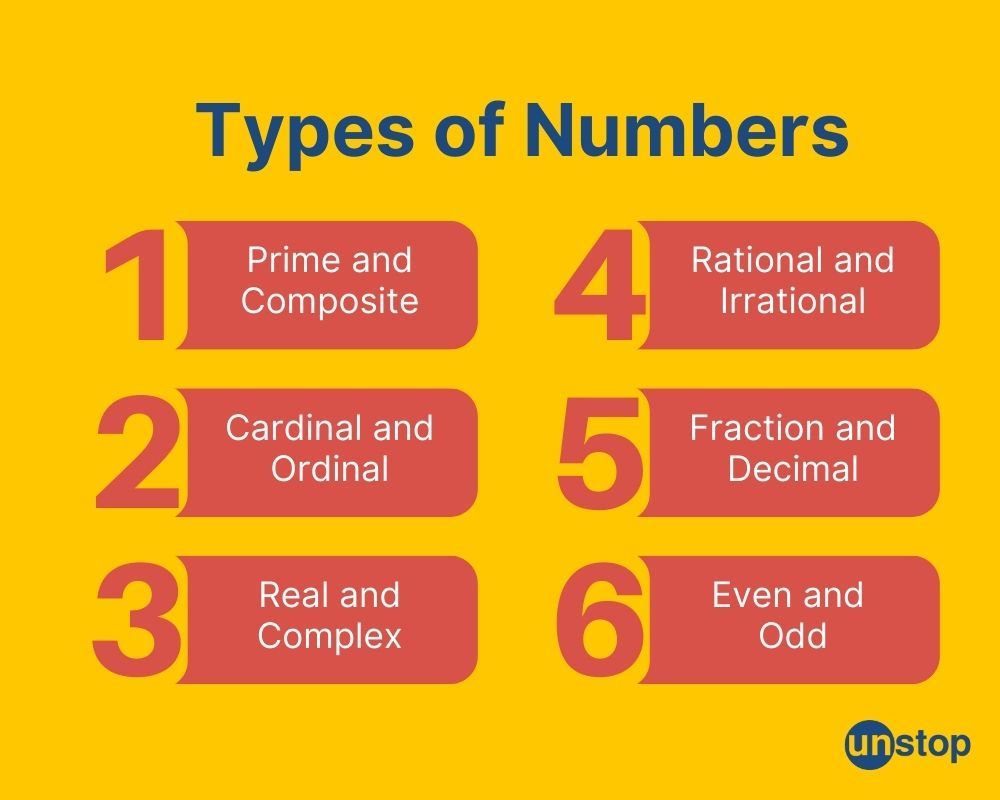
Even and Odd
Even numbers are numbers that can be divided by 2 without leaving a remainder. They include 2, 4, 6, 8, and so on. On the other hand, odd numbers are numbers that cannot be divided by 2 evenly. Examples of odd numbers are 1, 3, 5, 7, and beyond.
Prime and Composite Numbers
Prime numbers are natural numbers greater than 1 that have no positive divisors other than 1 and themselves. Examples of prime numbers include 2, 3, 5, 7, and so forth. These numbers play a crucial role in various mathematical concepts and encryption algorithms. When you multiply two prime numbers together, you always get a composite number.
Composite numbers are natural numbers greater than 1 that are not prime. They can be factored into smaller positive integers aside from just one and themselves. For example, while the number 9 is composite because it can be expressed as 3 x 3, the prime number 7 remains indivisible except by itself or one.
Importance of Prime Numbers in Number Theory
Prime numbers play a crucial role in encryption algorithms used for secure communication over the internet. Cryptographic protocols such as RSA encryption rely on the difficulty of factoring large composite numbers into their prime components.
Understanding prime numbers is essential not just for mathematicians but also for computer scientists working on developing secure systems to protect sensitive information online.
Cardinal and Ordinal Numbers
Cardinal Numbers
Cardinal numbers are used to count and express quantity in mathematics. They represent the quantity of objects or entities in a set. For example, when you count the number of apples in a basket, you are using cardinal numbers. These numbers answer the question "How many?" and are essential for basic arithmetic operations.
When dealing with cardinal numbers, it's crucial to understand that they follow a specific order. Each number represents a unique quantity, allowing us to perform addition, subtraction, multiplication, and division accurately. In essence, cardinal numbers provide the foundation for mathematical calculations and problem-solving.
Ordinal Numbers
Ordinal numbers indicate the position or order of elements in a sequence. Instead of focusing on quantity, like cardinal numbers, ordinal numbers emphasize the arrangement or rank of items. For instance, if you're participating in a race and finish third, your position is described using an ordinal number.
Understanding ordinal numbers is crucial in scenarios where sequence, ranking, or hierarchy matters. They help us identify winners in competitions, prioritize tasks based on importance, or organize data effectively. By recognizing the significance of ordinal numbers, we can navigate various situations that require ordering information.
Rational vs Irrational Numbers
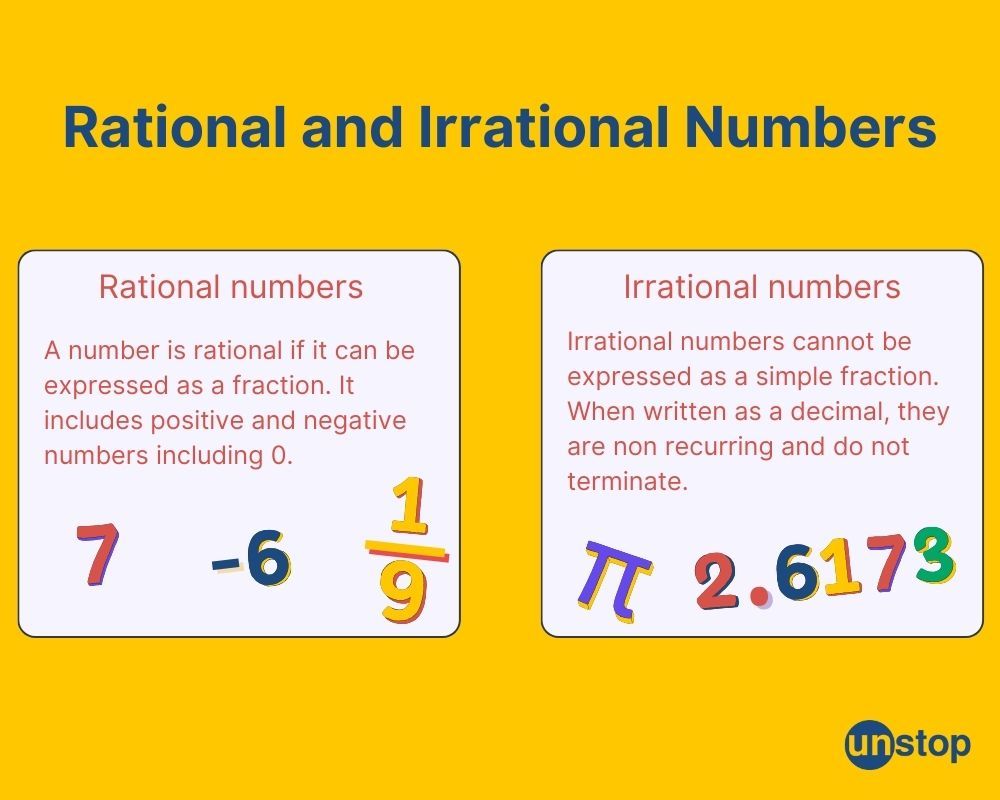
Rational
Rational numbers can be expressed as a fractional part of two integers where the denominator is not zero. These numbers are either terminating or repeating decimals. They can be positive, negative, or zero. Rational numbers have a finite number of digits after the decimal point.
The sum, difference, product, or quotient of two rational numbers is always another rational number. The grouping of rational numbers does not affect the result of addition or multiplication.
Irrational
Irrational numbers cannot be expressed as a ratio of two integers and have non-repeating, non-terminating decimal representations. Unlike rational numbers, irrational numbers have an infinite number of non-repeating digits after the decimal point. An example of an irrational number is √2, which cannot be simplified into a fraction. Pi is another famous irrational number representing the ratio of a circle's circumference to its diameter.
Irrational numbers pose unique challenges in mathematics due to their unpredictable nature and inability to be precisely represented as fractions. Despite this complexity, they play a crucial role in various mathematical concepts and applications.
Fraction vs Decimal Numbers
Decimals are numbers that are expressed in the base-ten numerical system, where the whole number part is separated from the fractional part by a decimal point. Fractions, on the other hand, represent a part of a whole and consist of a numerator (top number) and a denominator (bottom number) separated by a line.
Decimals can be easily converted to fractions by writing the decimal as a fraction with a denominator based on the number of decimal places. In contrast, fractions can be converted to decimals by dividing the numerator by the denominator.
Both decimals and fractions are essential in mathematics and everyday life to represent parts of a whole or quantities that are not whole numbers.
Real vs Complex Numbers Explored
Real Numbers
Real numbers are those that can be found on the number line, including both rational and irrational numbers. The identity property of real numbers states that any real number added to zero remains unchanged. For example, 5 + 0 = 5.
When it comes to real numbers, they encompass familiar values like integers (-2, -1, 0, 1, 2), fractions (1/2, 3/4), and irrational numbers such as √2 and π. These numbers are used in various mathematical operations and have practical applications in everyday life.
Complex Numbers
Complex numbers extend beyond real numbers by introducing the concept of imaginary units. An imaginary number is denoted by "i," where i² equals -1. When a real number is combined with an imaginary unit, it forms a complex number.
Complex numbers are written as a + bi, where "a" represents the real part and "bi" signifies the imaginary part. These numbers find extensive use in fields like engineering, physics, and signal processing due to their ability to solve problems that real numbers alone cannot address.
Imaginary numbers are multiples of the imaginary unit "i" and do not exist on the traditional number line. Despite their name, these numbers hold significant importance in mathematical equations and systems.
Basic Operations on Numbers
Addition
Addition is combining two or more numbers to find their sum. For instance, adding 3 and 5 gives a sum of 8.
When you add numbers, the order in which you add them does not change the result; this is known as the commutative property. For example, 2 + 4 equals 4 + 2.
Subtraction
Subtraction involves finding the difference between two numbers. It is the inverse operation of addition. For example, subtracting 5 from 10 results in 5.
To subtract effectively, always ensure that you subtract the smaller number from the larger one to avoid negative results.
Multiplication
Multiplication is repeated addition. It involves combining equal groups to find a total. For example, multiplying 3 by 4 gives a product of 12.
One essential rule in multiplication is the distributive property, where multiplying a number by a sum is the same as multiplying each addend by the number and then adding the products together.
Division
Division is splitting a number into equal parts. It helps us understand how many times one number can fit into another. For example, dividing 10 by 2 gives a quotient of 5.
When dividing numbers, it's crucial to remember that division is not commutative; changing the order changes the result.
Did you know about the inverse operation? Subtraction undoes addition, while division undoes multiplication.
Practice Questions (With Solutions)

Q1. What is the next prime number after 17?
Options:
a) 21
b) 23
c) 25
d) 19
Answer: d) 19
Q2. Which of the following numbers is divisible by both 3 and 4?
Options:
a) 14
b) 15
c) 16
d) 12
Answer: d) 12
Q3. If a=4 and b=3, what is a^2−b^2?
Options:
a) 7
b) 12
c) 1
d) 8
Answer: a) 7
Solution Explained
To solve this, we will place the values of a and b in the equation:
- (4^2)-(3^2)=16-9=7
Q4. What is the square root of 144?
Options:
a) 14
b) 10
c) 12
d) 16
Answer: c) 12
Solution Explained
The square root of 144 is:
- √'144=12
- This is because 12×12=144
Q5. If x=5, what is the value of 3x+7?
Options:
a) 21
b) 22
c) 10
d) 12
Answer: b) 22
Solution Explained
To solve this, we will place the values of x in the equation:
- (3*5)+7 = 15+7 = 22
Q6. If a+b=12 and a−b=4, what is the value of a?
Options:
a) 8
b) 9
c) 11
d) 10
Answer: a) 8
Solution Explained
To solve this, we need to convert a in terms of b.
- Now, if a+b = 12, then a = 12-b
- Use this value of a in the equation: 12-b-b=4 OR 12-2b = 4
- Solving for b:
- 2b=12-4
- 2b=8
- b=4
- Now that we have the value of b, we can find the value of a
- a = 12-4=8
Q7. What is the smallest number divisible by all integers from 1 to 10?
Options:
a) 2400
b) 2500
c) 2520
d) 2420
Answer: c) 2520
Solution Explained
The smallest number that is divisible by all integers from 1 to 10 is called the least common multiple (LCM) of those numbers.
To find the LCM of integers from 1 to 10, we need to find the product of each prime factor's highest power that appears in each number's factorisation.
Here are the prime factorizations of numbers from 1 to 10:
- 1=1^1
- 2=2^
- 3=3^1
- 4=4^2
- 5=5^1
- 6=2^1×3^1
- 7=7^1
- 8=2^3
- 9=3^2
- 10=2^1×5^1
Now, we take the highest power of each prime factor that appears in the factorization of each number:
- 2^3
- 3^2
- 5^1
- 7^1
So, the LCM of integers from 1 to 10 is:
- LCM(1,2,3,4,5,6,7,8,9,10)=2^3×3^2×5×7=8×9×5×7=2520
- So, the smallest number divisible by all integers from 1 to 10 is 2520.
Q8. What is the product of the first 5 prime numbers?
Options:
a) 210
b) 231
c) 3003
d) 2310
Answer: d) 2310
Solution Explained
- The first five prime numbers are 2, 3, 5, 7, and 11.
- To find the product of these prime numbers, we simply multiply them together:
- 2×3×5×7×11=2310
- So, the product of the first 5 prime numbers is 2310.
Q9. What is the 10th term of the arithmetic sequence 5, 8, 11, 14, ...?
Options:
a) 38
b) 35
c) 32
d) 25
Answer: c) 32
Solution Explained
In an arithmetic sequence, each term is equal to the previous term plus the common difference. The first term is 5, and the common difference is 3. Thus, the nth term can be found using the following formula:
- nth term = a + (n - 1) * d
- where a is the first term, d is the common difference, and n is the term number.
- For the 10th term, we have:
- n = 10 a = 5 d = 3
- Therefore, the 10th term is:
- 10th term = 5 + (10 - 1) * 3 = 32
Q10. What is the value of 25×34÷63?
Options:
a) 6.5
b) 12
c) 13.5
d) 18
Answer: c) 13.5
Solution Explained
To solve this, consider the equation: (25×34)÷63
- Perform the multiplication:
- 25×34=850
- Perform the division:
- 850÷63≈13.49 or 13.5
- So, the value of 25×34÷63 is 13.5
Q11. What is the smallest positive integer that is divisible by each of the numbers 1 through 6?
Options:
a) 30
b) 40
c) 50
d) 60
Answer: d) 60
Solution Explained
To find the smallest positive integer that is divisible by each of the numbers 1 through 6, we need to find their least common multiple (LCM).
The prime factorization of each number is as follows:
- 1=1^1
- 2=2^
- 3=3^1
- 4=4^2
- 5=5^1
- 6=2^1×3^1
To find the LCM, we take the highest power of each prime factor that appears in any of the factorizations:
- LCM=2^2×3^1×5^1=4x3x5=60
- So, the smallest positive integer divisible by each of the numbers 1 through 6 is 60.
Q12. What is the value of 1+2+3+…+100?
Options:
a) 5050
b) 4950
c) 5150
d) 5250
Answer: a) 5050
Solution Explained
The value of 1 + 2 + 3 + ... + 100 is the sum of the first 100 natural numbers. To solve this, we can use the following formula:
- Sum = n(n + 1) / 2
- where n = the total number of terms (in this case, n = 100)
Applying the formula:
- Sum = 100 (100 + 1) / 2
- Sum = 100 * 101 / 2
- Sum = 10100 / 2
- Sum = 5050
Therefore, the value of 1 + 2 + 3 + ... + 100 is 5050.
Q13. What is the sum of all integers from 1 to 100 that are divisible by 3?
Options:
a) 1683
b) 1668
c) 1716
d) 1755
Answer: a) 1683
Solution Explained
To find the sum of all integers from 1 to 100 that are divisible by 3, we can use the arithmetic series formula:
S=n/2×(a+l)
where:
- S is the sum of the series,
- n is the number of terms in the series,
- a is the first term, and
- l is the last term.
In this case:
- n is the number of integers from 1 to 100 that are divisible by 3,
- a is the first integer divisible by 3 (which is 3),
- l is the last integer divisible by 3 (which is 99).
First, let's find n:
- The largest integer less than or equal to 100 that is divisible by 3 is 99, and the smallest integer greater than or equal to 1 that is divisible by 3 is 3.
- The number of integers divisible by 3 from 1 to 100 is (99−3)/3+1=96/3+1=32+1=33
Now, let's find the sum:
- S=33/2×(3+99)
- S=33/2×102
- S=3366/2
- S=1683
So, the sum of all integers from 1 to 100 that are divisible by 3 is 1683.
Q14. What is the 20th term of the Fibonacci sequence (1, 1, 2, 3, 5, 8, ...)?
Options:
a) 6100
b) 7500
c) 6765
d) 8320
Answer: c) 6765
Solution Explained
Fibonacci sequence: series where each number is the sum of the two preceding ones. The 20th term of the sequence is 6765, which is obtained by adding the previous two terms (2584 and 4181).
Q15. If the product of two consecutive positive integers is 132, what is the smaller integer?
Options:
a) 10
b) 12
c) 13
d) 11
Answer: d) 11
Solution Explained
To solve this problem, let's use prime factorization:
- Prime factorizing 132 gives us 2 x 2 x 3 x 11.
- 11 and 12 are consecutive integers (11 x 12 = 132).
- Among these two, 11 is the smaller integer.
Enhance your knowledge further with this comprehensive course on Quantitative Aptitude.
You now know what is numbers in maths, their historical roots and their types. Understanding the significance of numerical systems and the classification of number in maths is crucial in grasping the fundamental principles that underpin mathematics.
By exploring cardinal and ordinal numbers, rationality versus irrationality, prime versus composite distinctions, and real versus complex numbers, you've gained a deeper insight into the rich tapestry of numerical concepts.
Time For A Short Quiz
Frequently Asked Questions
1. What are the different types of numbers?
The common types of numbers are cardinal, ordinal, rational, irrational, prime, composite, real, and complex numbers.
2. How important are numerical representations in mathematics?
Numerical representations are crucial as they allow us to quantify and communicate quantities effectively. Understanding different ways numbers can be represented helps in various mathematical operations and applications.
3. Can you explain the difference between cardinal and ordinal numbers?
Cardinal numbers represent quantity (e.g., one, two, three), while ordinal numbers denote position or order (e.g., first, second, third). The distinction is essential for accurately describing both the amount and sequence of elements.
4. What basic operations on numbers are simplified in the blog post?
The blog simplifies addition, subtraction, multiplication, and division of numbers. Clear explanations and examples provided will help you grasp these fundamental operations easily and apply them confidently in mathematical problems.
5. Why is it important to distinguish between rational and irrational numbers?
Distinguishing between rational (can be expressed as a fraction) and irrational (non-repeating, non-terminating decimals) numbers is vital as it impacts calculations involving precision and accuracy. Understanding their characteristics aids in solving equations efficiently.
Suggested Reads:
- Set Theory- Definition, Type, Formula, Practice Question & Answer
- Simplification- Basic Formulas With Practice Questions & Answers
- Height And Distance- Trigonometry Basics With Question & Answer
- What Is Mensuration: Formulas With Top Selected Question & Answer
- Mixture And Alligation: Explained With Selected Question & Answer
I’m a reader first and a writer second, constantly diving into the world of content. If I’m not writing or reading, I like watching movies and dreaming of a life by the beach.
Login to continue reading
And access exclusive content, personalized recommendations, and career-boosting opportunities.
Subscribe
to our newsletter












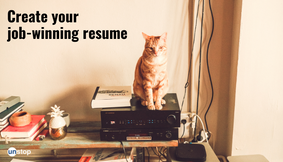
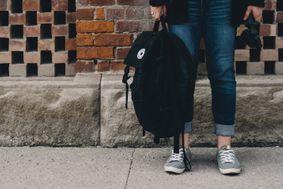


Comments
Add comment